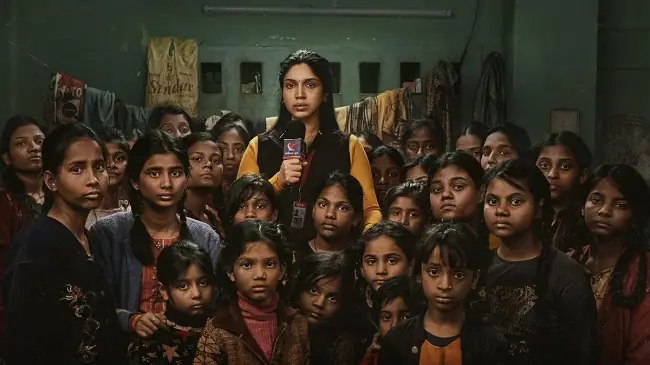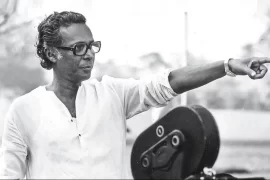Stories set in small towns have been trending in Bollywood for some time now, alongside a rising trend of female-led narratives. When you combine these two with a “fight the system” storyline based on real events, you get something similar to ‘Bhakshak’. In the very first scene, violence against women is used to dial up the sentiment of the viewers, making the villains look more monstrous without actually showing them committing the crime. Instead of delving into the inner world of the criminal minds, this approach takes an easy way out to building impactful characters. Indian cinema often lags behind in using the power of silence to develop characters and tell stories, relying too much on narration and dialogue without revealing much about the characters themselves. The beginning of the crime drama feels like that.

The texture of the small town is visible in the protagonist’s (Journalist Vaishali) lack of beautification and realistic costumes. But does being realistic mean being true to the person who inspired the character of Vaishali? I guess not yet in Hindi cinema. In ‘Bhakshak’, Vaishali is portrayed as a regular woman with vulnerabilities and a desire to prove herself as a journalist, making her character relatable. The crime drama is based on a real-life event that took place in the Muzaffarpur shelter home case in 2018.
I cannot help but wonder why stories like this are told in such a simplified manner. Perhaps a web series with 3 or 4 parts would have been able to do justice to the story. One thing I really like about the film is that it does not reverse the role of the male savior dressed as a journalist. The crime drama does not try to portray Bhumi as a superwoman who single-handedly changed the lives of the abused children. Power is distributed among many important characters, including the female police officer, the informer who filed the Public Interest Litigation (PIL), and her cameraperson. We know from our own lives that it is the combined efforts of many over a painstakingly long period of time that changes the system a bit. The journalist who inspired the character of Bhumi filed a PIL with the help of her lawyer friend, who was also a women’s rights activist. In the real incident, the MLA was made to sacrifice as a scapegoat for bigger political players. If the storytelling were more nuanced, we would have been able to see the reflection of these details. That would have been the story that I would have relished and recommended to everyone.







